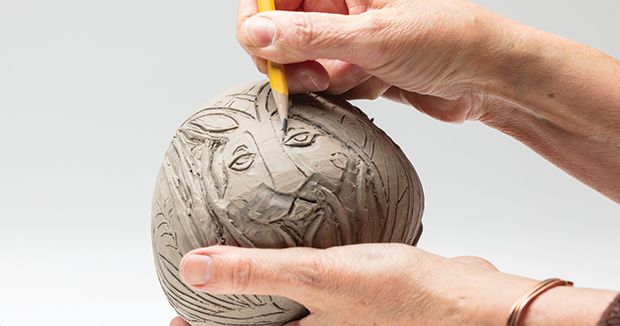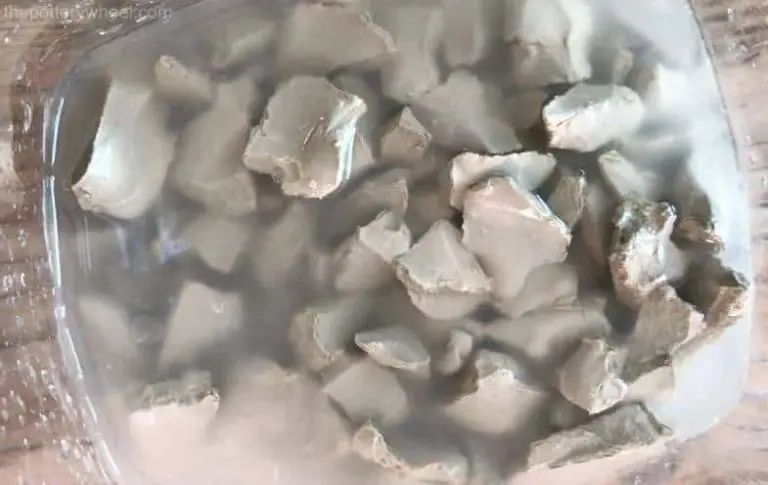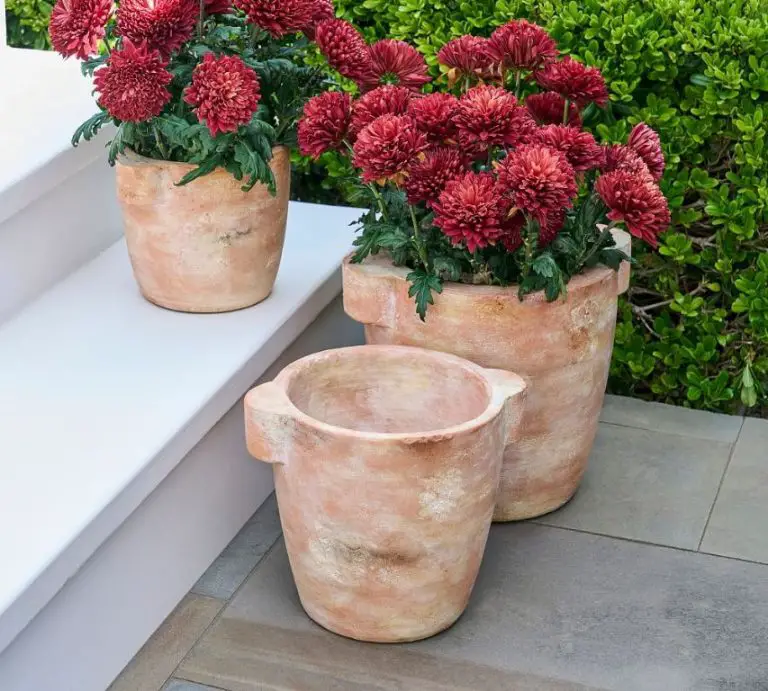From Terra Cotta To Stoneware: Exploring Clay Varieties
Terra cotta is a type of earthenware pottery made from clay that is fired at low temperatures, typically between 1500-2200°F. The term literally means “baked earth” in Italian. Terra cotta dates back thousands of years and was one of the earliest forms of pottery. It originated in China and the Near East in the Neolithic period and has been used widely throughout history for sculpture, pottery, and construction (https://en.wikipedia.org/wiki/Terracotta).
Stoneware is a stronger, non-porous type of pottery fired at higher temperatures, typically between 2200-2400°F. The higher firing fuses the clay particles together to create a water-tight material that is durable and can withstand repeated use. Stoneware was first developed in China during the Shang dynasty (1600-1046 BCE) and later spread to Europe and the US (https://www.britannica.com/art/stoneware).
Both terra cotta and stoneware begin with natural clay that is mixed with water to form a workable consistency. It can then be shaped and formed using a variety of techniques before being fired in a kiln to harden and set the clay. The key difference is the firing temperature, which affects the strength and porosity of the final product.
Types of Clay Used
Clay is primarily composed of silica, alumina, fluxes, and organic matter. The specific composition and ratio of these elements determines the type of clay and its properties. There are three main types of clay used for pottery – earthenware, stoneware, and porcelain.
Earthenware clay contains a high amount of silica and iron but lower amounts of fluxes. It fires at lower temperatures ranging from 1,800 to 2,100°F. Earthenware has a coarse texture and is porous when fired. It can be painted or glazed to make it non-porous. Common earthenware clay types include red and brown varieties (ThePotteryWheel).
Stoneware clay has higher amounts of fluxes like feldspar, resulting in vitrification and non-porousness when fired between 2,200 to 2,400°F. The increased fluxes allow stoneware to become watertight without glazes or finishes. It has a finer texture than earthenware. Some common stoneware clays are grey and white (SoulCeramics).
Porcelain clays have a very high concentration of kaolin clay and feldspar, resulting in a white, translucent appearance and delicate texture. It vitrifies and becomes non-porous at firing temperatures between 2,200 to 2,450°F. Porcelain can be fired at higher temperatures to develop increased strength and hardness. Natural clay deposits are mined and then further refined to produce clay for pottery.
Shaping and Forming Methods
There are several techniques used to shape and form terra cotta and stoneware clays into pottery and sculpture:
Handbuilding Techniques
Handbuilding involves manipulating the clay directly with your hands and simple tools. Common handbuilding techniques include:
- Coiling – rolling and joining long ropes or coils of clay
- Pinching – squeezing clay between the thumb and fingers
- Slab Rolling – flattening clay into sheets or slabs using a rolling pin
Handbuilding allows for asymmetrical forms and thick, sturdy vessels. It’s accessible for beginners but can also create complex works.
Wheel Throwing
Wheel throwing involves centering a ball of clay on a spinning pottery wheel and using your hands to shape it into a vessel as it rotates. This requires practice to coordinate the wheel speed and hand movements.
Wheel throwing enables symmetrical, thin-walled vessels with uniform shape and finish. It’s ideal for mass production but requires substantial skill.
Molding and Slip Casting
For molding, liquid clay slip is poured into plaster molds to form the desired shape. The molds can capture fine detail. This allows consistent duplication of forms.
Slip casting uses molds that absorb water from the slip until a shell of clay builds up inside the mold. The clay shell is then removed and trimmed. This also enables reproducibility and intricate forms.
Overall, the variety of shaping methods allows artisans to create diverse terra cotta and stoneware objects tailored to their creative vision.
Drying and Firing Process

After clay objects are shaped and formed, they must be thoroughly dried before firing in a kiln. Drying prevents cracking and warping by removing excess water from the clay body. Pieces need to dry slowly and evenly – too fast and you risk cracking, too slow and mold can develop. Some techniques like draping plastic over objects can control drying. Allow at least 1 week for drying time depending on climate.
Firing clay transforms it into a durable, ceramic material through exposure to high temperatures in a kiln. There are various kiln types that reach different maximum temperatures measured in degrees Celsius or Fahrenheit. The most common are:
- Electric kilns – Reach over 1300°C, very controllable
- Gas kilns – Can reach over 1300°C, inexpensive to run
- Wood-fired kilns – Reach 1200-1300°C, more variability in results
- Raku kilns – Smaller kilns reaching up to 1000°C
Firing temperature plays a key role in the final characteristics of the clay. Lower firing temperatures up to 1000°C produce terra cotta type ceramics that are porous and low strength. Higher firing from 1200-1300°C makes stoneware that becomes vitrified and non-porous with increased strength and durability.
Decoration and Glazing
There are many creative ways to decorate and finish terra cotta and stoneware pottery. Glazes are vitreous coatings applied before firing that create a glassy surface. Common glaze types include transparent, opaque, matte, and glossy glazes made from materials like silica, flux, and colorants.
Glazes can be brushed, dipped, or sprayed onto bisque ware (once clay has been fired at a low temperature). Multiple layers and colors can be used for effects. Terra sigillata is a refined clay slip that can be polished or burnished to create a glossy surface without glazing. Other options for decorating clay surfaces include painting directly onto bisque ware with underglazes, stains, and acrylic paints. Burnishing and polishing techniques like sgraffito can create decorative patterns by revealing different clay colors beneath the surface.
The variety of decoration options allow artisans to get creative with finishing techniques on both terra cotta and stoneware pottery pieces. Glazing in particular provides durable, water-resistant surfaces in endless colors and textures.https://modpodgerocksblog.com/clay-pot-painting-and-decorating/
Notable Terra Cotta Examples
Terra cotta has been used throughout history to create stunning works of art and architecture. One of the most famous uses of terra cotta is the Terracotta Army in China. This collection of over 8,000 life-size terra cotta figures was created around 210 BCE to guard the tomb of the first Emperor of China, Qin Shi Huang.
Terra cotta was the dominant medium used in Italian Renaissance sculpture. Many significant works from this period like the reliefs on Florence Cathedral and Donatello’s David were made with terra cotta. The durable material allowed artists to create intricate details and vivid expressions in their sculptures.
Architecturally, terra cotta has been used since ancient times to create roof tiles, bricks, and decorative elements on buildings. The varied colors and textures available with terra cotta made it popular for adding ornamentation. Terra cotta is still valued today for its durability, aesthetics, and ability to be molded into creative forms.
Notable Stoneware Examples
Some of the most iconic and renowned stoneware comes from Japan, China, and Europe:
Japanese mingei stoneware refers to rustic, handcrafted pots and vessels made for everyday use. Dating back to the 16th century, Japanese stoneware often features earthy, natural colors and textures. Famous pottery villages like Mashiko became known for their mingei stoneware made by unknown craftsmen. The mingei aesthetic influenced famous potters like Shoji Hamada.
Chinese Yixing teapots have been produced in the region of Yixing for over 400 years. These miniature teapots are handmade from Yixing clay and designed specifically for brewing particular types of tea. The unglazed stoneware absorbs flavors and aromas, seasoning the pot over time. Yixing teapots are considered works of art and valued as prized tea accoutrements.
European salt-glazed stoneware originated in Germany in the 15th century before spreading to England and other regions. The pottery is noted for its grayish-blue salt glaze achieved by throwing salt into the kiln during firing. British potters popularized sturdy, functional salt-glazed jugs, crocks, and bottles. Salt glazing provides an antique, Old World look that remains popular today.
Modern Use in Pottery
Both terra cotta and stoneware continue to be widely used in pottery today. Some key modern uses include:
The studio pottery movement, which began in the 1940s, brought a resurgence of interest in handmade functional pottery, often using terra cotta. Studio potters create unique, one-of-a-kind pieces and helped renew interest in traditional techniques and materials like terra cotta (Etsy).
Terra cotta is ideal for making plant pots and planters. Its porosity allows air and moisture to reach plant roots while also wicking away excess water. Unglazed terra cotta pots are affordable, durable, and provide a natural look popular for both indoor and outdoor use (Calloways).
Stoneware is a strong, non-porous clay often used to create tableware like plates, bowls, mugs, and more. Its durability and ability to hold glazes makes it a popular choice for functional dinnerware, cookware, and serving dishes in restaurants and homes today (Modern Artisans).
Comparing Terra Cotta and Stoneware
Terra cotta and stoneware have some clear differences when it comes to appearance, porosity, strength, and ideal uses.
Appearance-wise, terra cotta tends to have an earthier, red-orange color while stoneware is often gray, tan, or white. Terra cotta’s color comes from the iron oxide content of natural clays. Stoneware’s paler shades result from adding feldspar or other fluxes during firing to increase temperature resistance.
In terms of porosity, terra cotta is quite porous and permeable to liquids while stoneware has an impermeable, vitrified structure (source). The higher firing temperatures of stoneware cause the clay particles to fuse, creating a non-porous finished product.
The porosity difference also equates to strength differences. Terra cotta is brittle and prone to chipping while stoneware is incredibly durable and resistant to most damage (source). The vitrified nature of stoneware makes it significantly stronger than porous terra cotta.
Due to its fragility, terra cotta works best for items like flower pots and garden decor where chips add charm. The durability of stoneware makes it ideal for tableware, ovenware, and other functional pieces subject to daily wear-and-tear. The porosity of terra cotta can allow things like wall planters to breathe while stoneware provides an impermeable structure for liquid-holding vessels.
The main benefits of terra cotta are its natural look and lower firing temperature. It provides an organic, rustic aesthetic suitable for natural themes. Stoneware’s advantages include durability, impermeability, and heat resistance allowing for a wide range of household and commercial uses.
Conclusion
In conclusion, terra cotta and stoneware have an extensive history of important ceramic uses, but also continue to evolve through modern innovations. Terra cotta in particular has been utilized for centuries in architecture and sculpture, valued for its porous nature, vibrant glazes, and durability. Stoneware arose later, with its denser clay composition enabling thinner walls and new vessel shapes. Both clays remain staples in pottery today. As techniques advance, architects and artists find novel applications, like architectural facades created from terra cotta components. The variety of clay properties allows endless creativity. By understanding the legacy of these clays while looking ahead, terra cotta and stoneware will continue evolving and enriching human cultures.




